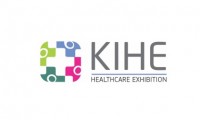-
KIHE 2025
- Source: drugdu
- 258
- August 27, 2024
-
【EXPERT Q&A】What is a passive medical device?
- Source: drugdu
- 71
- August 26, 2024
-
Novel Nanoparticles Found in Blood Pave Way for Less Invasive Cancer Diagnosis
- Source: drugdu
- 106
- August 21, 2024
-
VIETNAM MEDIPHARM EXPO
- Source: drugdu
- 234
- August 14, 2024
-
【EXPERT Q&A】What are Indonesia SAS certification, SNI certification and LS certification respectively?
- Source: drugdu
- 88
- August 12, 2024
-
FDA Approves Expanded Indication for Octapharma’s Fibryga for Patients Experiencing Bleeding Due to Acquired Fibrinogen Deficiency
- Source: drugdu
- 91
- August 7, 2024
-
Artificial Intelligence Test Determines Risk of Bowel Cancer Recurrence After Surgery
- Source: drugdu
- 66
- August 5, 2024
-
Vietnam Medipharm Expo
- Source: drugdu
- 155
- July 24, 2024
-
EMA accepts Deciphera’s MAA cell tumour treatment for review
- Source: drugdu
- 60
- July 22, 2024
-
【EXPERT Q&A】What are the potential areas for improvement in the accuracy of medical equipment?
- Source: drugdu
- 90
- July 19, 2024
your submission has already been received.
OK
Subscribe
Please enter a valid Email address!
Submit
The most relevant industry news & insight will be sent to you every two weeks.













